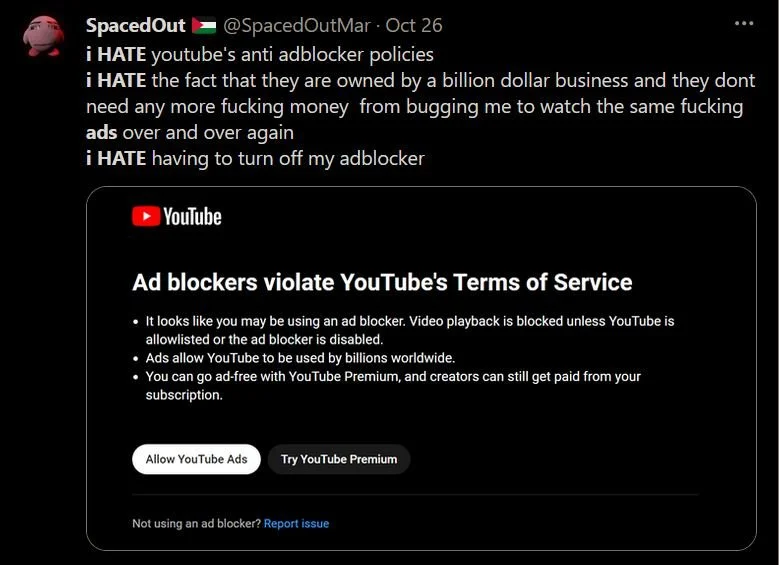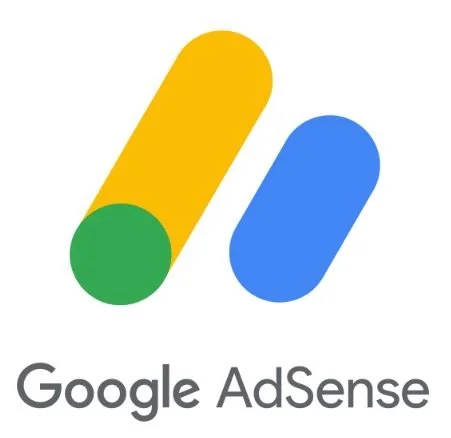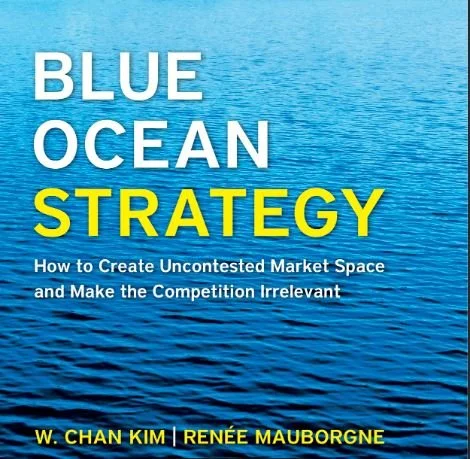
HACKING THE
ADVERTISING
M A C H I N E

Our Mission.
In today's digital landscape, the influence of advertising techniques on consumer experiences and overall wellbeing has emerged as a significant concern. Research underscores the urgency for a critical reassessment of prevailing advertising practices. A new paradigm shift must be designed to reflect and realize the positive changes we aspire to see. It involves rethinking and restructuring the very fundamentals of advertising strategies, prioritizing ethical considerations, and aligning them with the well-being of consumers. By doing so, we can foster a more harmonious relationship between advertising and the public, ensuring that advertising methods are not only effective but also socially responsible and sustainable in the long term.
The following key points illustrate the rationale behind our commitment to addressing these challenges and developing effective solutions.
People find ads more intrusive and irrelevant to their interests and preferences.
Retargeting ads are perceived as an invasion of privacy, making users uncomfortable with being tracked and analyzed.
Digital ads interrupt the user experience, leading to frustration, especially when they disrupt activities like watching videos.
Ads that aren't engaging, entertaining, or informative fail to resonate with modern consumers.
The repetitiveness and uninspired nature of many digital ads lead to "banner blindness," where ads become "invisible" to users.
Over-saturation of ads across various platforms leads to consumer resistance, with increasing use of ad blockers and subscription services to avoid ads.
The increase in media exposure leads to mental and physical exhaustion from too much advertising, reducing tolerance for ads.
Ads on digital media, especially on smartphones, are found more annoying compared to television, altering the consumer-media relationship.
Impact on Society.
Based on the negative statements regarding current advertising methods and referencing various health articles, we can infer several potential effects on the human body and mind if these issues remain unresolved:
Memory and Cognitive Processing High advertising exposure can affect memory and source attributions, leading to changes in cognitive processing as a coping mechanism against the persuasive influence of advertising messages.
Poor Health Choices: Exposure to certain types of advertising, especially food-related ads on social media, can influence poor food choices, negatively impacting physical health.
Consumer Distrust and Overload: Over-exposure to advertising can lead to increased consumer savviness and distrust, particularly concerning the intrusive nature of new technology. This could result in mental exhaustion and skepticism towards advertising content.
Mental Health Concerns in Youth: Excessive advertising exposure, particularly through social media, has been linked to increased rates of anxiety, depression, and stress among teenagers, affecting their overall mental well-being.
Overstimulation: With youth spending over 7 hours a day using various media, the constant exposure to advertising and media can lead to overstimulation, affecting their health and well-being.
Sources. w/ links
Effects of Advertising: A Qualitative Analysis of Young Adults from NCBI.
The risks of over-exposure: how ad bombardment promotes consumer from WARC.
The Impact of Advertising on Teenagers: Unveiling the Side Effects from LinkedIn.
Health Effects of Media on Children and Adolescents from the American Academy of Pediatrics.
More examples click Here.

The DNA of advertising.
1. Objective: The primary purpose of advertising is to inform, persuade, or remind. Whether it's to introduce a new product, increase brand awareness, or encourage a specific action, every ad has a clear goal.
2. Target Audience: Identifying and understanding the specific group of people an advertisement aims to reach is crucial. This includes demographics, psychographics, and behavior.
3. Message: The core idea or information the advertiser wants to convey. It should resonate with the target audience's needs, desires, and emotions.
4. Medium: The channel through which the message is delivered—be it print, television, radio, digital, or others.
5. Creativity: The unique and innovative way the message is presented. This differentiates one ad from another and helps in capturing the audience's attention.
6. Call to Action (CTA): The desired action the advertiser wants the audience to take after viewing the ad. This could be purchasing a product, signing up for a service, or simply visiting a website.
7. Measurement & Feedback: Assessing the effectiveness of the ad in achieving its objectives, usually through metrics like reach, engagement, conversion, etc.
Binding Laws.
1. Truthfulness: Ads must not be misleading or deceptive. Any claims made must be substantiated.
2. Fair Competition: Ads shouldn't unfairly discredit or attack competitors.
3. Decency & Respect: Advertisements should not be offensive, derogatory, or disrespectful to any individual, group, or culture.
4. Privacy: Respect the privacy of individuals. Personal data collected for advertising purposes should be handled responsibly.
5. Regulatory Compliance: Ads must adhere to specific regulations set by authorities, especially when advertising products like alcohol, tobacco, or pharmaceuticals.
6. Intellectual Property: Respect copyrights, trademarks, and other intellectual property rights.
In essence, while the medium and techniques of advertising have evolved over time, its DNA remains centered on communication, persuasion, and ethical considerations.
However.
Modern advertising techniques leverage extensive data analytics provided by technology companies. This data helps advertisers identify products that consumers are prone to purchase impulsively. Advertisers then craft compelling advertisements using strategic sounds, narratives, and visuals to influence consumers into making purchases they might not have originally intended.
To illustrate this point, one of many methods advertisers use is 're-targeting,' where they display ads for products that users have previously viewed or searched for online. This repeated exposure can create a sense of familiarity or urgency, nudging consumers towards a purchase. A study by the e-commerce platform Criteo found that re-targeted ads led to a 1040% increase in branded search queries, suggesting their significant influence on user behavior. (Source: Criteo Performance Marketing Benchmark, 2017)

Corporate strategies for effective re-targeting.
Data Analysis and Pattern Recognition
By studying browsing habits, search histories, and online behaviors, advertisers can discern patterns in consumer behavior. Understanding these patterns allows advertisers to predict what a user might be interested in, catering ads specifically to individual preferences.
Identification of Impulse Triggers
Humans often act on impulse, especially when faced with stimuli that evoke strong emotions or desires. By identifying which products are more likely to trigger impulsive behaviors, advertisers can focus their efforts on promoting those products.
Multisensory Engagement
Engaging multiple senses can create a more immersive experience for the consumer. Sounds, for example, can evoke emotions, memories, or a sense of urgency. Narratives tap into our love for stories and our ability to see ourselves in them. Visuals can attract attention and leave lasting impressions.
Creation of Perceived Need or Urgency
By presenting products in a certain way, advertisers can create a sense of need or urgency. This plays on the fear of missing out (FOMO) and can push consumers to make purchases to avoid potential regret.
Familiarity and Repeated Exposure
The mere exposure effect is a psychological phenomenon where people tend to develop a preference for things they are exposed to repeatedly. By showing ads for products users have already expressed interest in, advertisers capitalize on this sense of familiarity, making the product seem more appealing.
Amplification of the Mere Exposure Effect
As mentioned, the mere exposure effect plays a role in influencing preferences. By retargeting, advertisers amplify this effect, making the product not just familiar but also something that feels necessary or urgent to purchase.

Outmatched.
Considering the sophisticated and often obscure strategies used by marketers, can we, as a society, truly discern and make informed choices? Let's explore an executive summary to assess the present grasp of behavioral psychology.
Educational Curriculum: Behavioral psychology concepts are often introduced in high school psychology courses and are more deeply explored in college-level courses. The extent to which individuals have been exposed to these concepts depends largely on their educational background.
Age Group Considerations:
0-9 & 10-19: These groups are still in their formative educational years. Exposure to behavioral psychology would be minimal, mostly dependent on school curricula.
20-29: Many in this age group have recently completed or are still in higher education. Those who took psychology courses would have some understanding. However, considering not everyone opts for psychology, a significant portion might lack in-depth knowledge.
30-39: This group's exposure would depend on their education and profession. Those in professions like marketing, HR, and healthcare might have a better understanding.
40-49 & 50-59: These groups may have had less exposure to psychology in their formal education compared to younger generations, as psychology's inclusion in school curricula has increased over time.
60-69, 70-79, 80-89, & 90+: These older age groups would have had even less exposure to psychology in their school days. Their understanding would largely depend on personal interests, professions, or encounters with therapy and self-help resources.
Popularity of Psychology Courses: It's worth noting that psychology is one of the most popular undergraduate majors in the U.S. However, not every student who majors in psychology goes on to gain a deep understanding of behavioral psychology, and many who don't major in psychology might still take a course or two in the subject.
To summarize, Behavioral psychology concepts, especially those related to behavioral economics and decision-making, have become more mainstream due to popular books, TED talks, and other media. This has likely increased general awareness, though not necessarily deep understanding.

Politics / Censorship
Political interests can significantly influence the advertising realm, often leading to a skewed presentation of information. When political groups or individuals with specific agendas fund or influence advertising campaigns, it can result in biased messaging. This practice undermines the objectivity and trustworthiness of advertisements, as they may prioritize persuasive political rhetoric over factual or balanced information. The dominance of politically motivated ads, especially during election seasons, can saturate media platforms, overshadowing commercial advertisements and potentially causing public fatigue or skepticism towards advertising in general. Moreover, the targeting of specific demographic groups with politically charged ads can exacerbate social divisions and polarize public opinion.
The intrusion of political interests into advertising spaces risks compromising the integrity of the advertising industry and can have a detrimental impact on the democratic process by shaping public opinion through manipulation rather than informed choice.
Frustration.
“We need to stop interrupting what people are interested in and be what people are interested in.”
– Craig Davis

Dominant system agents.
No explanation is necessary, but one interesting fact is that Amazon is Google’s largest customer. Type in the letter ‘A’ in your search bar, and the first result will be always be Amazon. This is their playground.

MZDESIGN
MZDESIGN
Our Findings.
Most Effective Advertising Methods
1. On average, businesses make $2 in income for every $1 they spend in Google Ads.
2. 63% of people said they'd click on a Google Ad.
3. 80% of consumers remember a video ad they’ve viewed in the last month.
4. On average, every dollar spent on email marketing generates $38 of revenue.
5. Only about 2% of first-time visitors to a typical website make a purchase.
6. 72% of consumers would prefer to learn about a product or service through video.
7. Social media ad spend is expected to reach over $50 billion in 2021.
8. Customers from Facebook's paid ads are 22% more likely to make purchases than those who do not.
9. Instagram mobile ad revenue is expected to reach $15 billion by the end of the year.
10. Ad words account for 97% of Google's revenue.
11. Ads in LinkedIn's feed can reach up to 663 million users.
12. Mobile devices make up 53% of paid search clicks.
13. 72% of marketers are increasing their social media advertising budgets in 2021.
14. 87% of people who follow a brand on Twitter are more likely to visit the brand's website or app.
15. 30% of consumers trust a non-celebrity endorsement over a celebrity endorsement in an advertisement.
16. Banner ads have the lowest click-through rate of any form of online advertising at 0.06%.
17. Roughly 20% of consumers will unfollow a brand on social platforms if their content is too salesy.
18. Brands using Instagram for advertising reach over 1.16 billion users monthly.
Sources:
1. Gitnux Blog: Provided statistics on the effectiveness of various advertising methods including Google Ads, video ads, email marketing, social media advertising, mobile advertising, non-celebrity endorsements, and banner ad effectiveness.
2. HubSpot Blog's 2023 Marketing Strategy & Trends Report: Offered insights into current marketing trends like short-form video, influencer marketing, branded social media DM tactics, website SEO, humanizing brands, and the effectiveness of different media formats.
3. Marketing Week's 2023 Agenda: Highlighted the importance of marketing effectiveness measurement and the various metrics used by marketers to track effectiveness.

Why people dislike the current advertising methods.
Nielsen Norman Group Study
Conducted a survey with 452 U.S. adults.
Found the most disliked ad formats on desktop to be:
Modal ads (ads that appear over the page's content and require interaction to close).
Autoplay video ads.
Intracontent ads that shuffle page content.
Deceptive links (ads that look like content but are actually advertisements).
On mobile, the most disliked ads were:
Modal and intracontent ads with content reorganization.
Users preferred ads that could be dismissed or skipped, indicating a desire for control.
Ads that forced interaction or delayed access to content were negatively viewed.
Users expressed negative views on retargeting ads, with some considering them useful while others found them creepy or intrusive.
Positive comments were received for ads that blended in with content or were related to the user’s primary task, but deceptive links were strongly disliked for lack of upfront disclosure.
Wistia Blog Insights
Global advertising spending exceeded $330 billion in 2019, but people's distaste for ads remains a significant challenge. A key reason for this dislike is the irrelevance of ads to individual interests and preferences. According to HubSpot Research, 91% of people believe ads are more intrusive now than in the past, and 79% feel they are being tracked by retargeted ads. The perception of ads as an invasion of privacy, particularly retargeting ads, contributes to this negative sentiment. Additionally, ads that are not engaging, entertaining, or informative fail to resonate with modern buyers. The phenomenon of "banner blindness" also plays a role, where digital ads become "invisible" to users due to their repetitive and uninspired nature.
Stephen Sumner's Analysis on Digital Leadership Associates
The over-saturation of advertising across various platforms such as Twitch, Facebook, television, and billboards leads to consumers seeking ways to avoid ads, including using ad blockers and subscription services. This behavior suggests a growing resistance to traditional advertising methods. Marc Pritchard, chief brand officer at Procter & Gamble, notes that ads are often seen as irrelevant, silly, or stupid, and merely increasing the number of ads has only led to more noise. The trend towards storytelling and authenticity in branding is gaining traction, as these are perceived as more genuine and engaging by consumers.
Psychology Today's Perspective
Consumer response to advertising on digital media is considerably different from television, with up to two-thirds of consumers finding them annoying. A significant percentage (30%) have installed ad blockers to avoid ads. Factors contributing to this aversion include the change in media consumption behavior due to technology, overstimulation from constant media exposure, and inundation by advertising messages. This shift has resulted in mental and physical exhaustion among consumers, leading to a decreased tolerance for advertisements.

Historic Ad Reforms.
Advertising reform has a rich history marked by significant milestones that reflect society's evolving values and understanding of public welfare. For instance, the 1960s and 1970s saw landmark regulations in the United States, such as the ban on cigarette advertising on television and radio, which marked a crucial step in public health advocacy. Similarly, the introduction of the Children's Television Act in 1990 aimed to limit the amount and content of advertising directed at children, acknowledging the impact of advertising on young minds. More recently, the digital era has brought about new challenges and reforms, including stricter data privacy laws like the EU's General Data Protection Regulation (GDPR), which directly impacts how personal data is used in digital advertising.
These steps, though sometimes slow and met with resistance, indicate a positive trajectory. As long as we continue to prioritize consumer protection, ethical advertising practices, and adapt to emerging challenges, the sector is indeed heading in the right direction. This ongoing evolution in the advertising world is not just a response to past oversights but a proactive effort to shape a more responsible and conscientious future in media and marketing.
A Positive Perspective.

MZDESIGN
MZDESIGN
Our approach.
Comprehensive Perspective
It is a notable fact that a significant number of us are employed by organizations directly linked to the products we use. We hold high expectations for our sales teams to achieve outstanding performance in generating sales, yet there is a general aversion towards the advertising techniques presently in use, which are often perceived as excessively bothersome. This situation leads to a societal cognitive dissonance: the contradiction between our dislike for advertisements and our acquiescence to their persistent presence in our lives, feeling somewhat helpless to alter our exposure to them.
Applied to Ads..
When we share a funny video with someone and are interrupted by an ad, it takes the moment away as we quickly close the ad.
We sit in a theatre waiting for 20 minutes of ads to stop playing, feeling trapped and resentful that we paid to be there.
We launch an ad campaign knowing that we paid for disrupting peoples’ time, and we justify that it’s part of the game, feeling helpless because that is correct in both instances.
Method.
To effectively address this challenge, our approach must transcend the confines of the current, flawed system. It is not sufficient to merely compete within the existing framework; rather, we need to innovate and establish a completely new ecosystem of advertising practices.
…‘BLUE OCEAN STRATEGY is the simultaneous pursuit of differentiation and low cost to open up a new market space and create new demand. It is about creating and capturing uncontested market space, thereby making the competition irrelevant. It is based on the view that market boundaries and industry structure are not a given and can be reconstructed by the actions and beliefs of industry players.’
Resolution.
Addressing the limitations in current advertising practices could lead to several positive outcomes:
Individuals would experience less cognitive overload and mental fatigue, as they would be less bombarded with excessive and intrusive advertising.
Mental health concerns like anxiety and depression might be less prevalent, particularly among teenagers, as their exposure to potentially harmful advertising would be reduced.
Overall well-being, including physical health, could improve as individuals make healthier choices not influenced by persuasive or misleading advertising.
A balance in media consumption would prevent overstimulation and allow for more mindful engagement with content, reducing stress and improving mental clarity.
<_ Learn More













